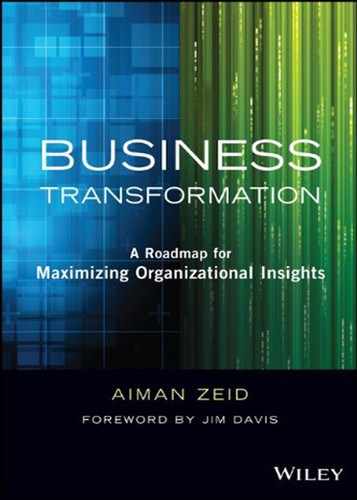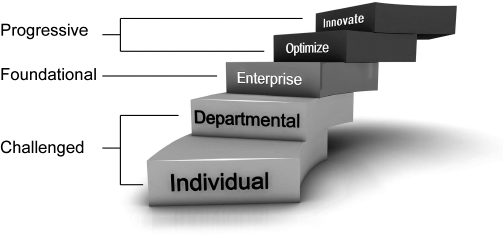CHAPTER 5
Progressive Organizations: Harnessing the Power of Information to Achieve Market Advantage and Expand Their Business Offerings
What we've learned so far: Moving to the Enterprise Level is a key step that provides a foundation for higher levels of maturity. Enterprise organizations are at a tipping point to achieve higher levels of competitive advantage by using their resources and talents to optimize and innovate. Reaching the Enterprise Level does require constant vigilance as it is easy for people, information processes, technology, and culture to slip out of alignment. Maintaining that alignment, and exploring the value that enterprise-wide information brings, is eye-opening.
In the fast-changing marketplace you need to move quickly and proactively to counter market forces. That's the reason to work toward the integrated enterprise-wide view of information emblematic of a Foundational Level organization. Is that enough? While having a clear picture of the value chain lowers your organization's risk, it doesn't take full advantage of the opportunities that come with integrated data. For this, organizations need to head for the Optimize and Innovate Levels.
Optimizing is about more than regularly using insight-driven decision making—as opposed to using it in an occasional project—it is about automating insight-driven decision making. The enterprise-wide view of data allows the organization to create a model that suggests the best price, the service plan most likely to entice a customer, or the defect (from warranty data) that manufacturing needs to address now. Optimized organizations use their understanding of their value chain to look for opportunities to drive the unnecessary cost out of their operations. They analyze their suppliers list and identify the ones that provide the best prices, relationship, and future potential for expanded partnerships. They analyze their interactions with customers, identify the most profitable ones, and develop strategies to keep their elite customers loyal and engaged. They take the same approach with their products and services to identify the profitable ones on which to focus as well as the not-so-profitable ones and subject them to critical analysis to determine their fate. They look for best practices and innovative methods to improve and align their internal functions. What do they get in return? Tangible improvement in their performance and market position and increased alignment with their suppliers and partners.
There is another key factor at play here: Optimized organizations do all this in ways that are highly automated and embedded in the process. It is not a one-time project to discover the most profitable customers; it is an ongoing process.
Often the narrative on innovative organizations suggests gutsy risk-taking ventures, the flouting of conventional wisdom, and bold, visionary leadership. The last part is correct in the sense that organizations at the Innovative Level typically require visionary leadership to drive information maturity to the point where it can support innovation. A good idea, after all, is just the beginning. Before that comes an exceptional understanding of the value chain, such that the organization can quickly and easily model new products or services. These organizations leave observers thinking not only “Why didn't we think of this?” but “How did they know that would be so successful?”
Innovative Level organizations think this way: “With the talent and knowledge we have, why should we limit ourselves to a specific line of product or industry?” That is when the executive vision, combined with innovative talent in the workforce, enables organizations to think about new products and services. These organizations institute a process and a culture that encourages and rewards prototyping new products and services. They use their own information as well as all possible external market information to study consumer behavior and the available products in the market, and look for opportunities they can capitalize on.
For both of these Progressive Levels, fact-based decision making is the norm. These organizations have put in the tough work of identifying enterprise-wide KPIs and have the flexibility to know when and how to change them up. Gut instinct has left the building. It's not coming back.
OPTIMIZATION: THE EASIEST BUSINESS CASE OF ALL
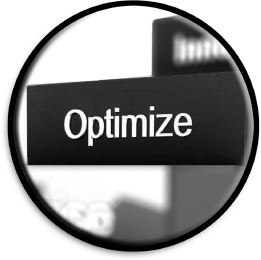
Optimization is the brass ring that analytics has been promising organizations for at least the past decade. But in a siloed environment, failures and stalled progress are likely. Retailers have embraced markdown optimization to move merchandise quickly—get rid of the bathing suits in August and holiday ornaments in January. But if the data isn't being fed back to vendors, planners, and assortment packers, the value of optimization is muted.
One international retail organization has deployed optimization better than most by reducing its involvement in the daily decision making involved in restocking goods. It opened up its internal store ordering systems to suppliers so they can see which stores need a fresh shipment of diapers or a dozen cases of apple juice. The organization incorporated weather forecast information that predicts severe weather, and used their supply chain to ship storm items to their stores in the affected areas. They carefully established all the business, engagement, and pricing rules to govern their relationships with their suppliers. Then, instead of getting mired in the tactical issues of diaper dispersal, headquarters works on the strategic issues—finding and pairing with suppliers that will provide the best price and service.
Optimization is transformative. A national shoe retailer wanted to eliminate the problem of Store A selling out of a certain size or style rapidly while Store B was heavily marking down the same style and size. It began analyzing store sales to find patterns that could suggest better assortment packs. Retailers have done this in the past in an ad hoc, “gut” sort of way. Boston got more boots and Miami got more flip flops. But this retailer, working in a well-integrated data environment, analyzed at a much more granular level using both past sales data and customer “frequent shopper” information. It doesn't just know that boots sell in Boston; it knows which Boston stores have a lot of size-8 customers who like edgier fashions. Stockouts have dropped, margins have improved, markdowns are fewer, and vendors have now bought into the process.
The optimized organization now has the ability to monitor the marketplace and quickly realign itself to meet market demands. It can incrementally improve the profit margin by removing cost from the process wherever possible. Both approaches improve the ability to compete. If you can do optimization better than anyone else in your market, you will achieve sustainable market leadership and competitive advantage.
The progression from the Enterprise Level to the Optimized Level is fluid because it requires no significant overhaul on any dimension, just incremental enhancements in each supported by sound executive leadership. However, this level represents the point at which organizational focus must shift from collecting and integrating data to using the value chain for optimization in every facet of the organization. These organizations will need new talents who understand how to optimize the organization value chain. That is how gaining genuine value from that data is realized. Paramount to success is consistent executive direction.
WHAT THE OPTIMIZED LEVEL ORGANIZATION LOOKS LIKE
- The organization optimizes every business function by driving the cost out and maximizing profit. It becomes more in touch with external market conditions and can foresee the slightest shift in expectations.
- It increases appetite for more data than ever because the organization monitors and analyzes structured and unstructured data from many sources: markets, customers, partners, suppliers, social networks, blogs, and wikis.
- It expands global operations as better data controls make these ventures less risky and more profitable.
Along with better partner and supplier collaboration, Optimized Level organizations have mastered the data quality and governance issues that lower information maturity organizations struggle with. The infrastructure is more open to integrating external data and contact channels to improve insight. The metadata model documents the entire business process, value, and strategy. Everything is transparent. A closed-loop infrastructure feeds results back into the system to create a continuous learning environment.
Self-Managing Knowledge Workers
The Optimized Level organization has fewer worker bees and more knowledge workers tasked with using analytics for strategy and performance management. These employees are typically given wide-spanning authority. The command and control management style is phased out. Collaborative work is valued, and there is emphasis on incremental process improvement.
Finding and retaining the right workers can be challenging, as the people who thrive in this environment are in great demand. In addition, some of the skills that help an organization get to the Enterprise Level may now be redirected to focus on optimization. It is essential to identify the employees who showed the greatest flexibility and drive at earlier levels and provide them the training and resources necessary to succeed at the Optimized Level. One organic way to identify the high flyers is through peer groups that are now formalized across departments. These groups get together for brainstorming sessions on how to identify and allocate cost to the various functions and processes in the organization value chain. Employees and decision makers leverage information and use trending, pattern analysis, forecasting, and predictive analytics to increase effectiveness, profitability, and quality, which leads to incremental improvement in market share and competitive advantage.
Reaching this level is disruptive. Resource realignment and the continuous skill-improvement requirement can leave employees wondering how they fit into the organization. Change management and training programs are critical to maintaining this level. The employees who acted as a conduit between the organization and vendors, those tasked with marking down merchandise, anyone who had specific skills and relationships, naturally fear they will become obsolete. While executives see optimization as a way to free resources for more, the resources are worried about job security. It becomes even more important that the right training and reward systems are in place. Those who think outside the box to achieve greater optimization deserve additional training, new opportunities, and advancement.
OPTIMIZED LEVEL: PEOPLE
- The staff is focused on incremental process improvement.
- Autonomy and empowerment are common.
- Cross-business unit peer groups become established.
- Knowledge workers are prized, rewarded, and given adequate training.
Feeding the Continuous Improvement Loop
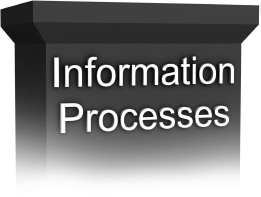
Self-improvement is paramount at this level. Information processes established at the Enterprise Level are now expanded to provide feedback that drives optimization of internal and external functions. Best practices are captured to replicate successes and to prevent repeated mistakes.
Project experience is documented, and new project teams start by checking out these corporate experiences. New projects are designed to evolve into ongoing, automated processes.
In order to optimize, these organizations put in place new information processes that govern how external information sources are integrated with organizational data. They ask vendors and suppliers to participate in the information sharing process and optimization efforts. This collaboration helps strengthen relationships with suppliers and partners and provides the organization with a better understanding of their partners' knowledge, capabilities, and potential.
Many optimization efforts, though, give customers the sense that they're working with a forward-looking organization. Let's look at a financial institution that wants to boost its credit card business. The local megamall is hosting a big promotion. If the bank can automate a text message about the promotion to customers near the mall, and offer five percent cash back, it magnifies the impact of the pitch. It's not just a message about five percent cash back or just a message about a mall promotion. It shows the bank's attempt to understand the consumer's shopping preferences and desire to provide relevant value in the form of cash back for purchases the consumer is buying anyway.
Plus, business units have a strong set of processes and tools to better analyze whether these kinds of efforts yield a strong enough return on investment. Discoveries in one unit can be quickly applied across the organization. For example, if combining two items on a promotional web page doubled sales of the cross-sell item, that knowledge can be rapidly exported to in-store displays.
As the organization learns more about the value chain, the metrics evolve to emphasize a more outward focus. Measures are defined and tracked across time periods for the entire business value chain. These might include employee productivity, sales growth rate, customer satisfaction, time to market, and adoption rate of new products and customers. Cause-and-effect relationships among performance metrics get closer scrutiny. The global restaurant company that learned that quick service wasn't enough was able to find the “sweet spot” where fresher taste didn't take so long that customers complained about the wait. This is also often the point at which organizations discover that seemingly sound business or marketing practices are counterproductive—such as when a telecommunications provider learns that the customers with the highest-priced plans are not always the most profitable.
OPTIMIZED LEVEL: INFORMATION PROCESSES
- Best practices are captured to replicate successes and prevent repeated mistakes.
- KPIs are tweaked to better understand root causes and drive performance.
- Information is pulled in from outside sources.
- The organization works collaboratively with vendors and suppliers.
- Functions for outsourcing are easily identified.
Anywhere, Anytime Intelligence
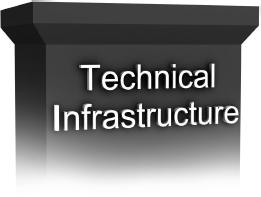
Optimized Level organizations accelerate their adoption of new technologies and concepts, especially those that strengthen the relationship with customers, partners, and suppliers. They use the insight they develop from understanding their value chain, and develop multiple cross-function business performance views to enable them to analyze their value chain and look for business, process, and product optimization opportunities. Multiple data marts that integrate products, customers, and channel information are developed. Various views of customer satisfaction, microsegmentations, and customer value analysis are used to enhance customer experience and validate business assumptions of product quality and value. The goal is to be well-positioned to derive the most insight from social media, along with knowing when cloud computing, software as a service, and high-performance analytics can make a difference. They are eager to adopt technologies that help them understand the broader aspects of their customers' behavior using social media analytics and manage risk in real time using high performance analytics. They are very focused on driving incremental improvements, and can easily and quickly build the business case to strengthen their information infrastructure capabilities.
The Optimized Level organization has a highly calibrated sense of the analytic functions that need to remain centralized and those that should be pushed down to the business unit. Because the data is well governed, these organizations can keep specialized high-end analytic activities embedded in the business unit, knowing the results of those efforts aren't at odds with enterprise-wide insight. While information integration suggests centralized control, decision makers in business units can actually have more autonomy and flexibility.
FAILURE IS OKAY
In organizations at this level, failure is part of the learning process as they start to look at what customer behavior signs or events might indicate the customer is leaving—or which marketing messages and channels are more effective to attract a certain age group or demographic. These are difficult questions to answer. Using analytics to figure out answers to these business challenges requires the exploration of various alternatives and hypotheses. Exploring the validity of some of the options may not produce positive outcomes. These practices are viewed as constructive steps in the learning process and are accepted as necessary to arrive at the correct outcome. The organization is so agile that missteps can be easily foreseen or overcome—and prevented from recurring. This supportive attitude works both ways. People are willing to accept the concept of compromise for the good of the organization if they know the organization is willing to compromise for them.
The use of technology goes far beyond the classic business intelligence drill, sort, filter, and rank—the calculations and tallies that are sometimes mistaken for analytics. At this level, organizations use analytics to predict future outcomes of interest; explore and understand complex relationships in data; and model customer behaviors and processes. Business analytics tools model workflow interactions to develop new and improved business processes. They monitor cause-and-effect relationships to continue finding opportunities to improve. They examine customer information to detect patterns that predict future behavior. And they get answers in real time, or close to it. Knowledge workers can forecast and predict, not merely look at what happened in the past.
OPTIMIZED LEVEL: TECHNICAL INFRASTRUCTURE
- New technologies are adopted with comparative ease and better results.
- Function, process, and infrastructure de-duplication continue, saving time and money.
- Technology supports optimization, predictive analytics, and forecasting.
- Business units have access to high-quality enterprise information and high-end tools because the data is centralized, not the analysis of it.
Thriving on Change

At this level, change is a core competency—not a threat. The compensation system is structured around business performance (as measured by KPIs). The organization expects employees to apply critical thinking, validate assumptions, and determine root causes as bases for decisions. With an adaptive information architecture, job descriptions, accountabilities, organizational structure, workflow, and processes are more fluid. This is important as change is rapid, iterative, and continuous—just as it is in the markets the organization serves.
Optimized Level organizations can't function unless collaboration is embedded in the culture. The environment promotes widespread sharing of internal and external information across business units and functions, providing a broad context for communities of interest to share their experiences and fine-tune the business. This culture of community now extends outside the organization to include customers, suppliers, and partners. Strategic thinkers are prized as visionaries, and their ideas are given a chance to fly. Some of these ideas will flop, but mistakes are not punished; they are viewed as learning experiences.
To tackle difficult business problems, these organizations form diverse teams, combining expertise from various business functions in ways they've never done before. Critical analytical, business, as well as technical skills are used to focus on optimizing the enterprise value chain, with information on the value chain documented and distributed to all business units and decision makers. Centers of Excellence play a key role. The centers help business units learn how to use data and analytics to answer questions like: “How can we identify cost imbedded in our processes?” “How can we identify the most profitable products and customers?” “How can we optimize our distribution routes?” “Will this process improvement be worth it?”
OPTIMIZED LEVEL: CULTURE
Flexibility and adaptability are important traits.
- Employees are rewarded based on business performance.
- Collaboration is essential and ongoing.
- Analytics supports novel initiatives.
- Executive support remains constant.
Getting the Most from Optimization
The Optimized Level has challenges. It can sometimes be a struggle to win over vendors and suppliers to the “optimized” way of doing business—sharing performance and operational results. Optimization models can also be so complex that they take too long to run using conventional computing, such as a markdown optimization model that takes a day or more to run. Procuring cutting-edge, high-performance analytic technologies is necessary. There also needs to be a dedicated effort to care and feed information to the models that support optimization. At this level, modeling and advanced analytics are neither one-time projects nor a process that is set up to run into infinity. Models will change, competitive pressures shift, new sources of information emerge. The organization has to have the people, processes, technology, and culture to account for these issues and make changes as necessary.
Internal perception is another challenge. Because optimization introduces changes to the operating model, the organization needs to explain how it uses insight to optimize its value chain and to make decisions. Helping everyone understand the value of insight-driven decision making is paramount. This is particularly important in organizations that will continue to depend on a large pool of customer-facing staff (such as retailers, government entities, and telecommunication and hospitality providers). If the hotel desk clerk, the call center operator, or the assistant store manager doesn't understand why certain offers are being made—or doesn't trust the optimization's recommendations, seeking to override or ignore them—then efforts are jeopardized. Business performance dashboards for frontline staff can help.
Finally, even a good thing can be taken to an extreme. Optimization in and of itself can only wring out so much profit. And organizations may be at risk if they rest too much on their laurels and become too confident of their ability to control and protect their market share and success. In this global economy, continuing success will depend on innovation—and exploring different ways to improve performance, products, and services, and their understanding of their customers.
TOWARD INNOVATION AND BEYOND

Twenty years ago, you bought music on a compact disc, books came bound, and photos had to be developed. Toys were purchased at a store, and you needed to set a VCR to record a television show. Obviously things have changed. In many cases, the manufacturers of now rarely used products have changed. Others went out of business. Even in organizations that were first to market with an innovative new product (think of the early smartphone producers) someone else comes along and does it better. All the more reason to try and reach for the Innovate Level.
As beneficial as it is to optimize your organization it can produce a sense of contentment, which leads to acceptance of the status quo, which may present a significant risk to organizations in industries undergoing rapid transformation. In other words: You can't rest on your laurels. Innovation—in terms of new products, new services, and new ways to deliver goods to your customers—is critical. Innovation, though, starts with a focus on what the enterprise does well—its core competencies. Having used insight to optimize the bottom line, organizations at this level are ready to use insight to focus on the top line.
A great example of this is health care plan organizations that have integrated their data to streamline their marketing campaigns, root out fraud, and provide competitive disease management programs. What's the next step? For some very sophisticated plans, teaming with pharmaceutical companies to conduct aftermarket studies on drugs and interactions is a logical step. After all, the health plan has a rich data source to tap—and skill in using it.
Or, take the example of a company that initially mastered selling books online. Then it figured out how to sell lots of other things on the web (sometimes in partnership and sometimes directly), then it looked at the struggling e-reader market and came out with its own version. Now it's helping authors bypass publishers. It wasn't the first company to sell products online or the first to develop an e-reader, and self-publishing has been around forever. This organization just kept building on its core competencies. Given the organization's success, it's a sure bet that data isn't siloed and analytics is well practiced.
WHAT THE INNOVATE LEVEL ORGANIZATION LOOKS LIKE
- Proactive and continuous innovation
- Fosters and rewards innovation
- Exceptional at incorporating outside data sources
- Analytics-driven product and service decisions differentiation
- Dominates industry and competes as a leader in a global market
The Innovate Level organization extends the value of previous maturity stages. This organization spawns new ideas and institutionalizes innovation. And it understands what it does well and applies this expertise to new areas of opportunity. There seem to be no limits to the new ideas that employees put forth, ideas that bring revenue from new sources. Some of the most inventive ideas are gleaned from other industries and unlikely inspirations.
Everyone in the organization is encouraged to offer up new ideas through a well-established process. New ideas are routinely modeled and prototyped to identify the ones that have the merit and potential to drive the organization forward. Groups with various competencies are formed to analyze and prototype new products and services. Go/no-go decisions are based on information and sophisticated descriptive and predictive analytics that include data from the entire value chain—from sources inside and outside the organization. A principal focus is innovation that is driven by a well-defined internal process that encourages prototyping, piloting, and exploration in new markets. These organizations dominate their industry in market share, taking bold risks, setting new trends, and breaking new ground. Their efforts are based on a thorough understanding of their customers' behaviors, market changes, and product values. Their innovative approach puts them ahead of their competitors.
Creative Collaborators
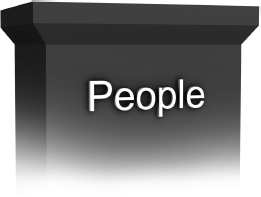
In addition to the people needed to run and optimize the business, the organization attracts and rewards individuals who can synthesize information and ideas from multiple industries and interpret these to propose new and viable services and products. People are expected to think like entrepreneurs. Hungry ones. These people are hard to find, but the organization has made an ongoing commitment to hire and retain them in part by providing a stimulating environment for creative thinkers who like to challenge old paradigms and work outside the box. In many cases, organizations can also identify existing human resources who have intimate knowledge of the organization value chain and capabilities as well as the creative and innovative minds. In this dynamic environment, anyone in the organization can bring a new idea to the table. The toughest aspect for these organizations? Identifying and encouraging this creative process, and keeping the critical resources engaged. Losing this talent will significantly hinder this innovative process.
It is also important to recognize that these skills are not just product, marketing, or analytical resources. They include executives and leaders who create the environment and culture to foster innovation. Think of Steve Jobs's career and involvement in Microsoft before leading Apple. His vision and creativity made him an icon in the industry and propelled Apple, from a performance and consumer perspective, to a leader and trendsetter as it broke new ground in many areas of telecommunications and media. Its success was clearly based on its ability to better and earlier understand consumers' preferences and requirements. It took bold risks in creating new product interfaces and in creating the worldwide collaboration of partners that contributed to its success by developing products that work on its iPhone and iPad products. It managed to get thousands of organizations to indirectly promote its products.
People at the Innovate Level truly represent a cross-section of different talent types—from efficiency experts to right-brain-centered individuals. Multidisciplinary skills are common. Differences in background, experience, and knowledge are embraced and encouraged. Collaboration is all the richer when the participants bring unique perspectives to the table. Cross-functional peer groups continue to play a key role in an individual's day. Peer groups are always looking to broaden the diversity of the team—all the better for the most vibrant brainstorming sessions and the most creative ideas.
INNOVATE LEVEL: PEOPLE
- Individuals with varied skill sets are cultivated.
- Collaboration is expected.
- Creativity is prized.
- Entrepreneurial personalities fit well.
Managing Constant Renewal
There is no rest for the process guardians at the Innovate Level organization. In addition to keeping the well-defined processes built up over time, these organizations need new processes and policies for managing innovation. A project incubation process is used to grow new ideas and move them quickly into prototype and pilot stages. The results of innovation are routinely managed, evaluated, and communicated in a well-structured manner. The innovation pipeline is analyzed just like a portfolio of risk. The Innovate Level organization stays on top of issues such as technology readiness, barriers to market entry, the impact of a new project on existing processes, and—more important—on its existing customer base.
New metrics reflect the importance of innovation, such as revenue from new ventures, number of ideas at various stages of the development process, time from idea to launch, and the projected value of new ideas in the pipeline.
INNOVATE LEVEL: INFORMATION PROCESSES
- Business processes are self-learning and self-tuning.
- Process to prototype and pilot new products and services is well-defined.
- Performance metrics reflect the importance of innovation.
- Comprehensive and mature governance processes and policies continue to evolve.
Growing a Support Network for Innovation

The integrated, enterprise-wide IT architecture continues to update and distribute value chain information to all decision makers and support the optimization process with appropriate data marts that provide integrated information from various business functions. The exploration of new ideas that may produce new products or services requires additional integration and consolidation of internal and external information. Innovate Level organizations dedicate technical resources to support this critical need. Teams with appropriate technical, analytical, and domain resources are quickly formed to support timely analysis and exploration of new prototypes that have been approved in a laboratory-type environment. The infrastructure becomes an information hub to support creativity, with options for sharing, reviewing, commenting, and analyzing information. It includes a kind of content management system for assembling internal and external information needed to spawn new ideas, manage the pipeline of new ideas, and move along ideas deemed worthy to pursue. The infrastructure accepts structured and unstructured data in a variety of media, such as databases, text documents, graphics, e-mail, and digitized voice communications. Proposals and pilot projects are documented and categorized and are easily accessible for reference and use. Post-pilot reviews are documented and made available for learning.
Predictive analytics is used extensively to model the future—to identify potential ideas quickly, rule them out or approve them, and minimize the risk of moving forward with any of them. “What if” becomes a daily question, and analytics provides reliable answers based on quality information. Risk management systems and human capital management systems take on new life.
Information access is generally widespread among knowledge workers, but when sensitive information is needed to speed research and prototyping efforts it is done quickly with an established protocol that recognizes the importance of speed to market. The organization's information infrastructure is adaptable enough to provide a secure environment or laboratory to support innovation.
INNOVATE LEVEL: TECHNOLOGY INFRASTRUCTURE
- Allows rapid analysis of new business and marketing opportunities.
- Affords knowledge workers easy access to information—with appropriate security measures for protecting intellectual property.
- Supports analysis of many different types of internal and external data, including unstructured data.
- Incorporates a broad variety of information delivery and analysis options.
A Culture of Entrepreneurial Innovation

One of the chief reasons organizations need to become insight-driven is to replace gut instinct and intuition. In disorganized, data-immature organizations intuition is problematic, as it is too often used to justify wrong decisions. At the Innovate Level, intuition gets a seat at the table again, but with a twist. This is because the culture is aligned so that creative individuals draw on their instincts—and on data—to make decisions and explore new products and services. These are organizations that are successful enough to avoid failures, because they've learned how to efficiently vet ideas and pull the plug before large costs have been accrued. After all, perhaps only one idea in ten will be funded for further development and one in one hundred of those actually brought to market. But if the idea can be quickly brought from concept to fruition the discarded ideas don't impact the bottom line like they might in an organization that doesn't have the insight and maturity to rapidly model them in a virtual environment and track the pipeline just like it manages tangible products.
Innovate Level organizations function like magnets drawing in highly skilled, creative workers—although finding those who fit the culture can be a challenge. And helping existing employees stay up to date on the organizational evolution requires a sophisticated internal communications team. In addition, the organization must balance the types of knowledge workers it employs. Some highly skilled, highly creative individuals prefer to work as “lone wolves,” which can cause friction at an organization that needs to form and reform teams to better innovate. Innovate organizations are always working to strike the right balance.
Innovate Level organizations don't fear market volatility; they meet it head-on through continuous innovation. These organizations deliver a constant stream of new products, services, and business models—staying ahead of the competition to sustain market leadership. When competition or commoditization threatens one source of revenue, the organization had already predicted and considered this outcome, and is already prepared to release the next product.
As is the case in other levels of maturity, these organizations face the risk of losing focus. Daily tactical and operational responsibilities still exist—and finding the right mix of staff to monitor the more routine activities is needed. The challenge is to constantly hone the business strategy, being careful not to stray too far away from core competencies or stray too far out of alignment with market conditions and customer demands.
INNOVATE LEVEL: CULTURE
- New ideas are continuously evaluated.
- Permission to fail is considered part of the creative and innovative process.
- A proactive approach to information and market research protects the organization when competition or commoditization threatens one source of revenue.
- Executive leadership supports an entrepreneurial approach to innovation.
Stopping at the Optimized Level—or Striving toward the Innovate Level
“At what level do we really need to be?” Given the information maturity level most organizations are at, the question seems simple. Organizations absolutely must break out of the Individual and Departmental mindset and progress toward an enterprise-wide approach. The Enterprise Level is without question the starting point and the foundation to gain the efficiencies of the Optimized Level and the competitive and proactive advantages of the Innovate Level. Enterprise Level should be the minimum level of organizational maturity. Many factors will influence the strategy to move forward toward the higher level. These factors include the organization's size and global reach, the industry and the market competitive pressure, and the history and legacy of the organization. There are good reasons to always work on optimizing the organization's value chain to drive out unnecessary cost. And there are also many cases where innovation to expand the current portfolio of products and services is necessary for survival in today's very competitive global market. And, finally, it is important to also point out that once organizations achieve a reasonable level of value chain optimization, they may assign various priority levels to drive innovation in their different business functions.
BUSINESS TRANSFORMATION STRATEGY OBJECTIVES FOR PROGRESSIVE ORGANIZATIONS
Your organization is in much better shape compared to the majority of organizations if you believe you have achieved some of the capabilities and characteristics of the Optimized and the Innovate organizations. Chances are that these progressive improvements may not be widespread across the organization's business units, or your organization is at the early stages of this maturity journey. To continue to progress and not lose momentum, many organizations at this stage have the following objectives for their business transformation strategy:
- Assess your current organizational capabilities in the four key pillars and determine business priorities and gaps in capabilities.
- Focus on evaluating the current resources in critical areas to ensure the appropriate talents are acquired and retained.
- Focus on internal communication, change management, and training to support the desired innovative and progressive culture.
What Is Next after Finding Your Current Organization Maturity Level
This chapter, as well as Chapters 3 and 4, has provided descriptions to help you figure out at what level your organization is working currently, what levels are optimal, and some of the characteristics of each level with examples of what organizations can accomplish (or can't) at the various information maturity levels. In the following chapters, you will read about the role of a Center of Excellence at each maturity stage, with some examples of organizations that have successfully moved to a more mature level and a roadmap to help your organization get started.
